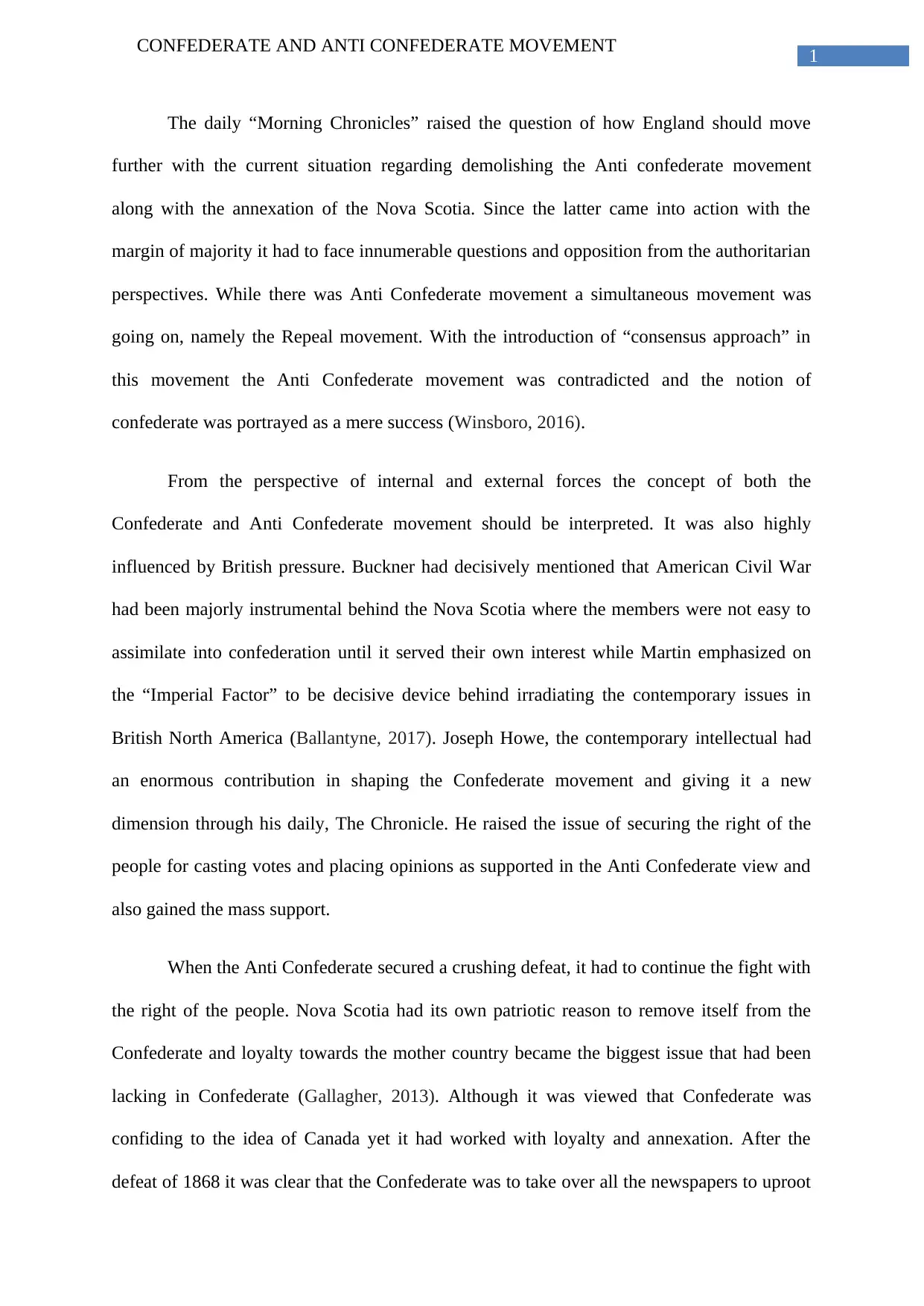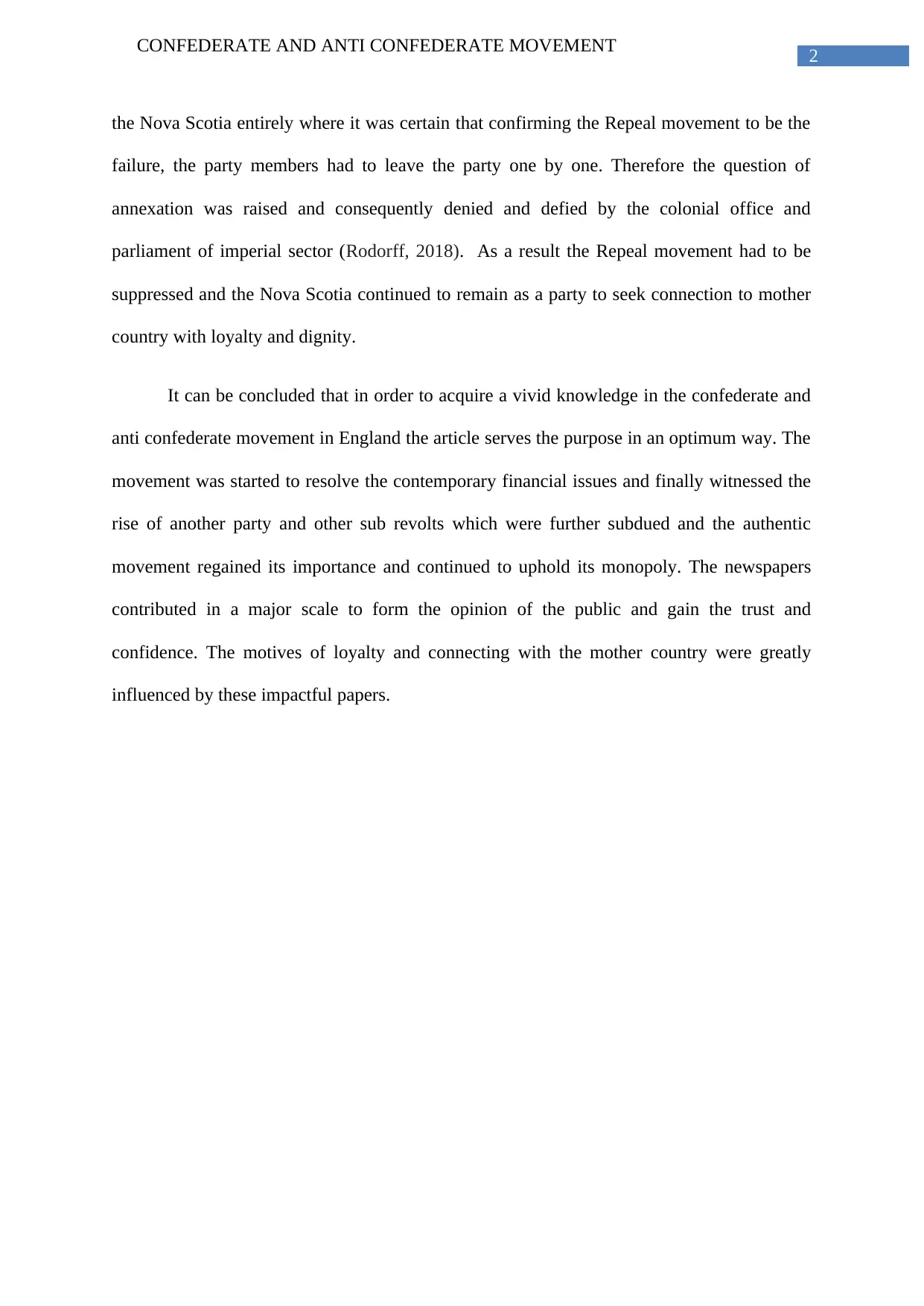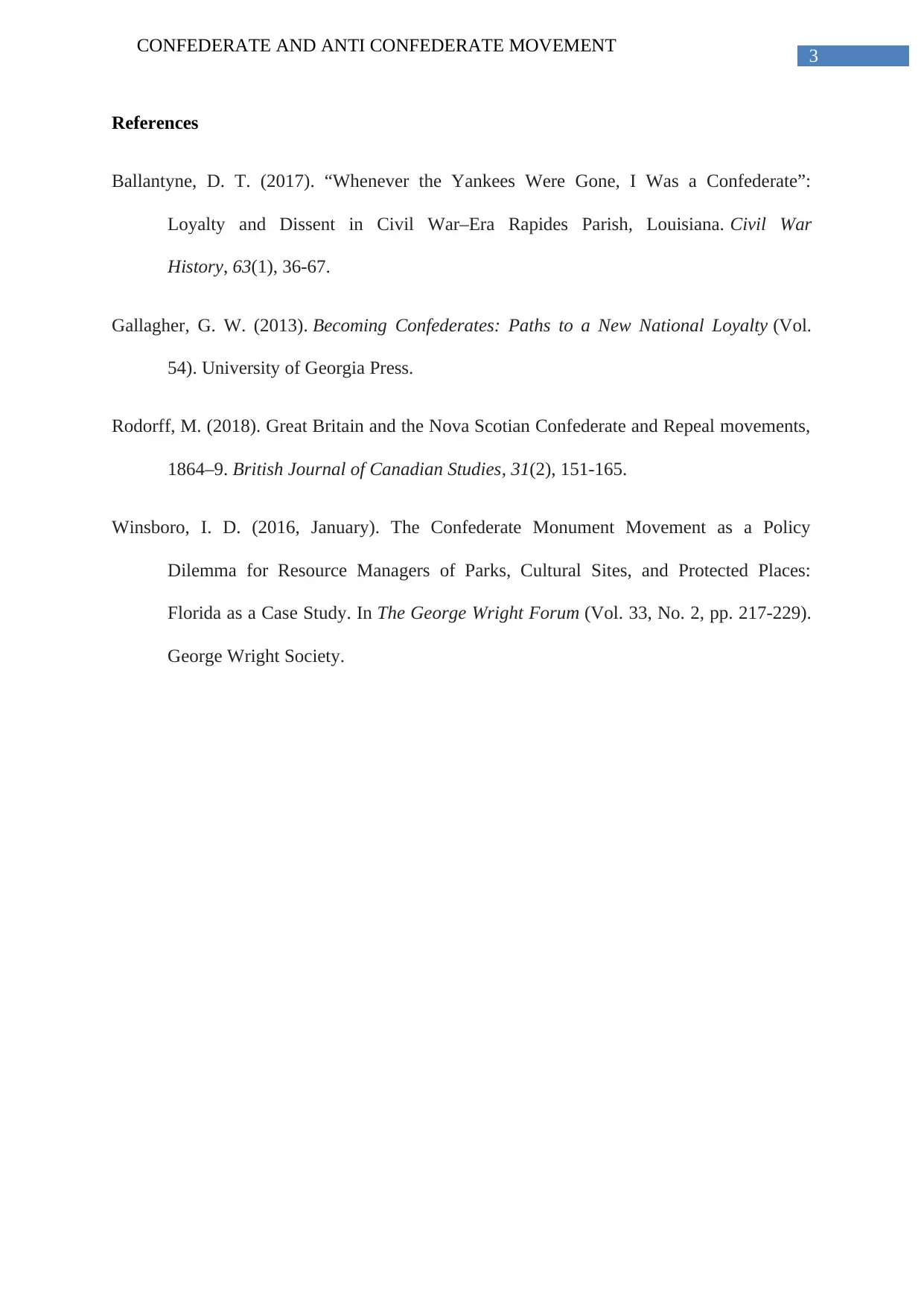Analysis of Confederate and Anti Confederate Movement Article
VerifiedAdded on 2022/09/30
|4
|751
|32
Report
AI Summary
This report analyzes an article examining the Confederate and Anti Confederate movements, focusing on the historical context of Nova Scotia and England. The analysis explores the main arguments presented in the article, which include the influence of British pressure, the role of Joseph Howe, and the rise and fall of the Repeal movement. The report also identifies the sources used by the author, such as historical accounts and publications like "The Chronicle," and assesses the historical debates surrounding the annexation of Nova Scotia and the loyalty of its citizens. The report concludes by evaluating the article's usefulness in understanding these complex historical events, emphasizing the significance of newspapers in shaping public opinion and the enduring themes of loyalty and national identity.
1 out of 4





![[object Object]](/_next/static/media/star-bottom.7253800d.svg)